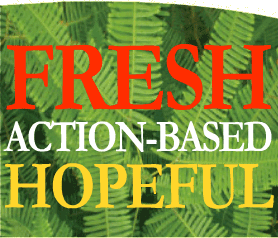First, we asked ourselves what kind of training helps employees of our organization learn new skills and enjoy themselves at the same time. As a result, we built our trainings around an active adult learning model, which means we present new and challenging ideas with adequate time for discussion so everyone can “get it,” have participants practice real-time activities in the training room that integrate the learning into their typical work or community organizing tasks, and then provide time for de-briefing, dialogue, and questioning to further embed the learning.
Because social service and community change work can often be stressful and draining, our trainings are specifically designed to increase energy and hopefulness. Although we challenge participants to excel in the training topic, our approach includes healthy doses of laughter, gentle encouragement, and stories about what’s working in other places. Participants leave the training room with more hope and more skills.
Each participant receives a training packet that includes: 1) all material covered during the training, 2) a bibliography/reading list, and 3) other targeted materials to further learning.
Trainings can be designed for beginning or advanced practitioners in the topic area, but most often are designed and delivered to engage both kinds of learners at the same time.

#2: Big change is easier than small change. Why? Resistance increases the closer a new idea is to an old one. Talk to a person who lost five pounds. Talk to a person who lost fifty pounds. One person changed a fundamental assumption about who they were and dug in for the long haul. The other person wanted to stay the same, just be a little thinner.
“They have a way of knowing, seeing, and remembering community that is critical for our kind of work.”








